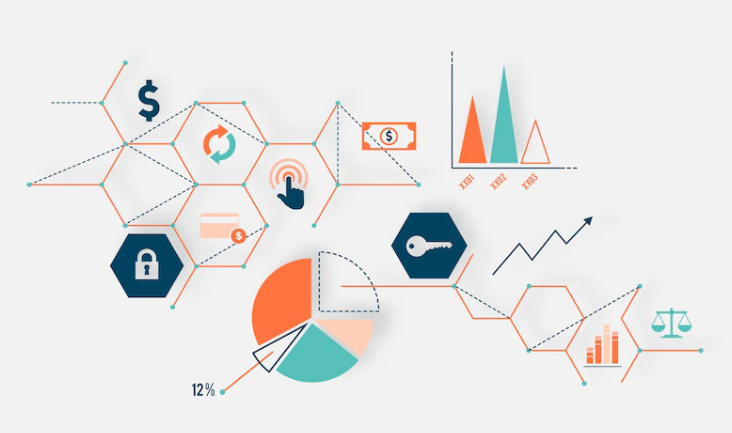Highest Paying Data Analytics Jobs in 2023

In this article
Data analytics jobs are heading for a big increase in 2021. Learn more about the top highest paying data analytics jobs in this guide along with the tips on how you can choose the right data analytics job.
Careers in technology and information are subject to drastic fluctuations in demand due to their fluid and flexible nature. However, jobs in data science—and especially in data analytics—are seeing steady growth.
IBM was correct in their prediction that the demand for data scientists would increase by 28% in 2020 alone. But that’s not the only upward trend in the industry. The U.S. Bureau of Labor Statistics now considers data science and analytics to be in the top 20 fastest growing positions. They even estimate an increase in demand of over 30% over the next ten years.
Are Data Analysts Paid Well?

According to Glassdoor, as an entry-level data analyst, you should expect to make around $40,000 a year. However, the number significantly increases for junior data analysts, who make an average annual salary of $52,000. As a mid-level data analyst, at around the five-year mark, the national salary average rises to $74K for data professionals. But that’s not the end of the financial road for analysts. ZipRecruiter estimates that approximately 53% of senior data analysts make six figures a year.
Top 10 High Paying Data Analytics Jobs

Data analytics isn’t a single career path, but a descriptor of a variety of occupations all in a similar realm. With some searching, you’ll be able to find the right occupation for you that’s also high-paying and has room for future growth.
1. Data Engineer
Data engineers are responsible for identifying trends and anomalies in data sets. They develop algorithms from scratch that manipulate data for more useful insights and information.
This role requires a lot of technical knowledge in data structure and data manipulation programming languages like SQL and Python. According to Payscale, entry-level data engineers start earning around $77,000 a year and increase to around $115,000 as seniors.
2. IT Systems Analyst
IT systems analysts—commonly known as technology analysts—specialize in designing, implementing, and analyzing various information systems. You need to have a deep understanding of the various hardware and software components in devices and machines to solve technical issues your company may face.
As for income, you should expect $60,000 as a fresh recruit and over $90,000 as a senior. According to the U.S. Bureau of Labor Statistics, the demand for IT systems analysts is expected to increase by around 7% over the next decade.
3. Marketing Analyst
Market research analysts are often responsible for collecting and analyzing market data using platforms like Google Analytics and BuzzSumo. Not only does this job require experience in data science, but you also need to be good at digital marketing. As more companies go digital, the demand for digital marketing would surely follow.
As an entry-level marketing analyst, you can expect an annual salary anywhere from $50,000 to $62,000. With around a decade of experience, senior marketing analysts earn $93,000 on average.
4. Quantitative Analyst
Quantitative analysts apply quantitative analysis methods that center objective measurements and numerical data often collected through polls and surveys to support and direct companies in making financial and critical business decisions. This occupation not only requires a deep understanding of data science but also familiarity with business management and finance.
Entry-level quantitative analysts can expect to make $50,000 to $70,000 annually. However, since the role is in high demand, you can expect to climb the ladder fairly quickly to over $150,000 for top earners.
5. Data Architect
Data architects create blueprints and designs for data management and storage systems. While this occupation isn’t directly linked to extracting insights from data, you need to be familiar with the analysis process to build suitable data structures.
Data architecture is one of the most desirable data analytics jobs as more businesses collect and store their own data. In fact, Recruiter predicts a 15.9% increase in demand for data architects over the next few years, and the salaries reflect the need. According to Glassdoor, the average senior data architect earns just under $130,000 a year.
Get To Know Other Data Analytics Students
Sarah Savage
Content Data Analyst at EdX
Yogita Nesargi
Data Engineer at Deloitte
Sylwia Padiasek
Senior Research Analyst at Gro Intelligence
6. Database Administrator
As a database administrator—also known as a database manager—you’d be responsible for monitoring and evaluating database structures and software to ensure they meet the needs of your employer. This requires considerable knowledge in data storage, warehousing, general structures, and experience in common coding languages and databases like Python, Java, MySQL, and MSSQL.
Even an entry-level database administrator should expect no less than $80,000 a year and can easily earn over $140,000 as a senior. The relatively high salaries reflect the predicted 10% increase in database administrator employment rates.
7. Data Analyst
Data analysts often work directly with the managers and executives of companies and corporations. You’d be regularly asked for data-backed recommendations regarding future company decisions and how they should run operations. To become a successful data analyst, you need a keen eye for detail and the ability to identify trends and anomalies in massive data sets.
Starting out, the average entry-level data analyst earns under $45,000 but can easily grow into a six-figure income in less than 10 years. In addition, a 2018 survey published by the World Economic Forum estimated that in 2022, 85% of companies would adopt new technologies that drastically increase the need for data analysts.
8. Business Intelligence Analyst
Business analysts study and analyze the structure and design of a company or corporation, looking for ways to make work more efficient and employees more productive.
Entry-level business analysts make $67,000 on average. Senior business analysts can expect to make approximately double that, and some earn up to $130,000 a year. Additionally, you shouldn’t face any trouble finding a stable job as a business analyst. The number of available jobs increased by approximately 160% over the five years leading up to 2019.
9. Data Scientists
As a data scientist, you’ll be responsible for collecting and analyzing large data sets. You’ll often need to have a deep understanding of databases and data structures to segment them and prepare them for in-depth data analysis.
According to Glassdoor, a significant portion of entry-level data scientists makes around $90,000 a year, while senior scientists easily make it beyond the $130,000 mark. Between now and 2026, the market should see an additional 11 million data scientist jobs.
10. Operations Analyst
Operations analysts focus and analyze the internal and external processes of a business to understand how it works. This includes understanding the company’s hierarchy, how different departments communicate and interact, and how the company—as a whole—interacts with outsourced work.
As an operations analyst, you’re likely to land a job at a large corporation instead of a small business. As an entry-level analyst, you should expect at least a $60,000 annual salary, while a senior analyst can make just over $70,000 on average—though the top earners often make six figures.
Factors Determining Data Analyst Salary
Average salaries are just that: averages. For any given role, your salary depends on multiple factors, such as:
- Experience. The number of years of work experience an analyst brings plays a considerable role in their salary. Employers don’t only consider how many years they’ve worked, but also where they worked before and whether their experience is particularly relevant.
- Up-to-Date Skills. Companies constantly upgrade to more efficient approaches to managing and analyzing their data. To keep up, you need to update your skills by learning how to use the latest software and coding languages.
- Supply and Demand. The more in-demand an occupation is, the higher the average salary. But as the number of qualified analysts increases, the numbers may vary accordingly.
- Industry. Companies in different sectors face different data challenges. Working for a tech-based company deeply engaged with data typically pays more than a non-technical company that only requires an occasional or less intensive analysis of their data.
- Size of the Company. Larger corporations tend to pay more and have a bigger budget for data analysts. While working for a big company might pay more, it may also be more complex and demanding.
- Location. Companies operating in technical hubs and city centers often invest more in their data scientists and analysts as local competition and average living prices tend to be overall higher.
How To Choose the Right Data Analytics Job
While salary and demand should play a role in your decision about which jobs to pursue, consider your current data analytics skills and what new skills you want to learn, too.
If you’re an outgoing person, specializing in operations or business analytics—where you need to have regular meetings and pitch ideas to managers and executives—might be the right choice for you. However, if you prefer limiting your work hours to your computers and working on a database non-stop, more technical jobs like data architecture and engineering may suit you better.
Another factor you should consider is geography and whether your local area can accommodate large corporations or if you’d have to transfer locations to find better opportunities. Also, consider whether you can do your work remotely or not, which can affect both your geographical limitations and personal life.
Since you’re here…
Interested in a career in data analytics? You will be after scanning this data analytics salary guide. When you’re serious about getting a job, look into our 40-hour Intro to Data Analytics Course for total beginners, or our mentor-led Data Analytics Bootcamp—there’s a job guarantee.





